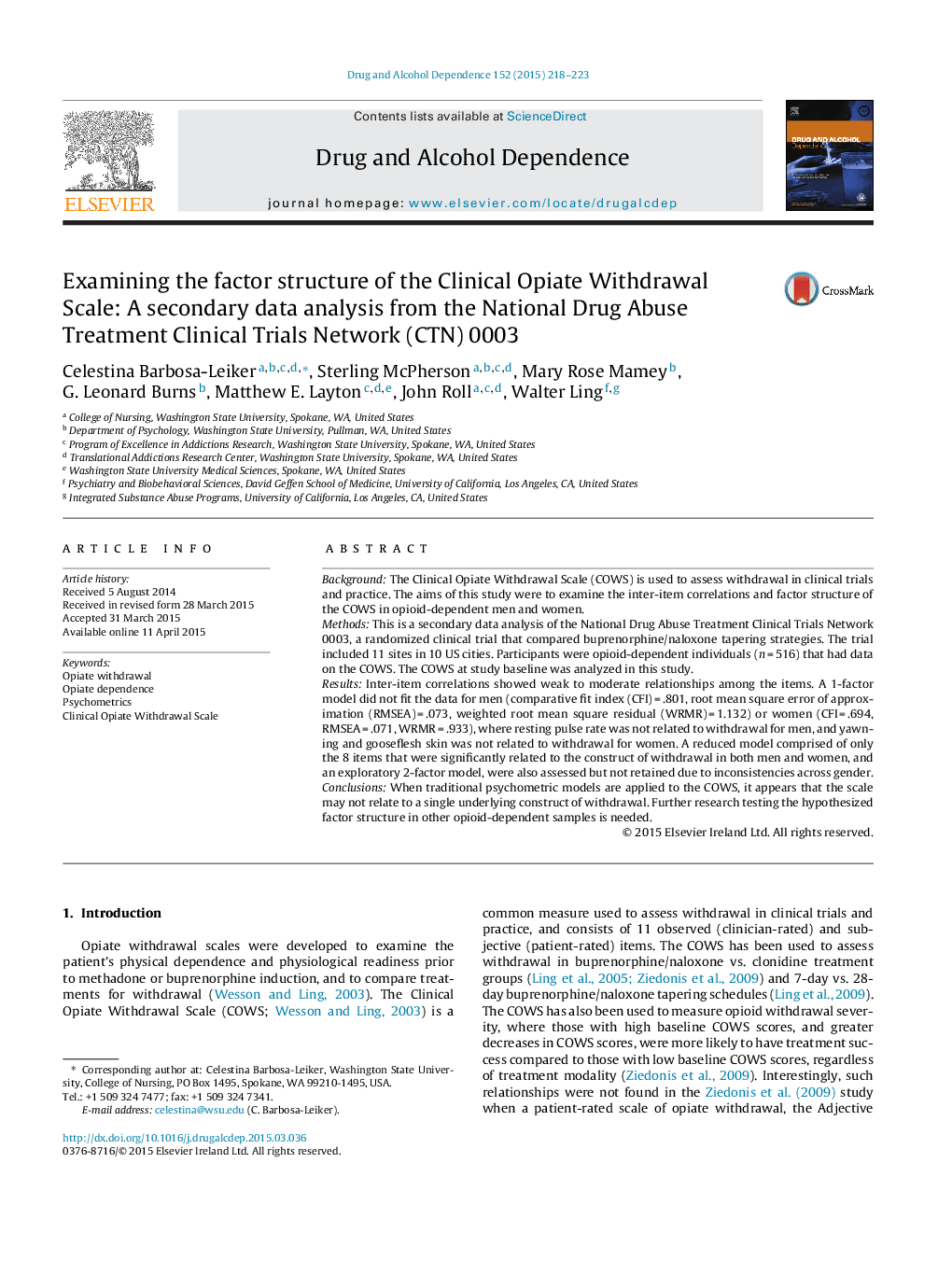| Article ID | Journal | Published Year | Pages | File Type |
|---|---|---|---|---|
| 1069790 | Drug and Alcohol Dependence | 2015 | 6 Pages |
•We assessed the factor structure of the Clinical Opiate Withdrawal Scale (COWS).•A 1-factor model did not fit the data for opioid-dependent men or women.•The COWS may not relate to a single underlying construct of withdrawal.•Further testing of the factor structure in opioid-dependent samples is needed.
BackgroundThe Clinical Opiate Withdrawal Scale (COWS) is used to assess withdrawal in clinical trials and practice. The aims of this study were to examine the inter-item correlations and factor structure of the COWS in opioid-dependent men and women.MethodsThis is a secondary data analysis of the National Drug Abuse Treatment Clinical Trials Network 0003, a randomized clinical trial that compared buprenorphine/naloxone tapering strategies. The trial included 11 sites in 10 US cities. Participants were opioid-dependent individuals (n = 516) that had data on the COWS. The COWS at study baseline was analyzed in this study.ResultsInter-item correlations showed weak to moderate relationships among the items. A 1-factor model did not fit the data for men (comparative fit index (CFI) = .801, root mean square error of approximation (RMSEA) = .073, weighted root mean square residual (WRMR) = 1.132) or women (CFI = .694, RMSEA = .071, WRMR = .933), where resting pulse rate was not related to withdrawal for men, and yawning and gooseflesh skin was not related to withdrawal for women. A reduced model comprised of only the 8 items that were significantly related to the construct of withdrawal in both men and women, and an exploratory 2-factor model, were also assessed but not retained due to inconsistencies across gender.ConclusionsWhen traditional psychometric models are applied to the COWS, it appears that the scale may not relate to a single underlying construct of withdrawal. Further research testing the hypothesized factor structure in other opioid-dependent samples is needed.
